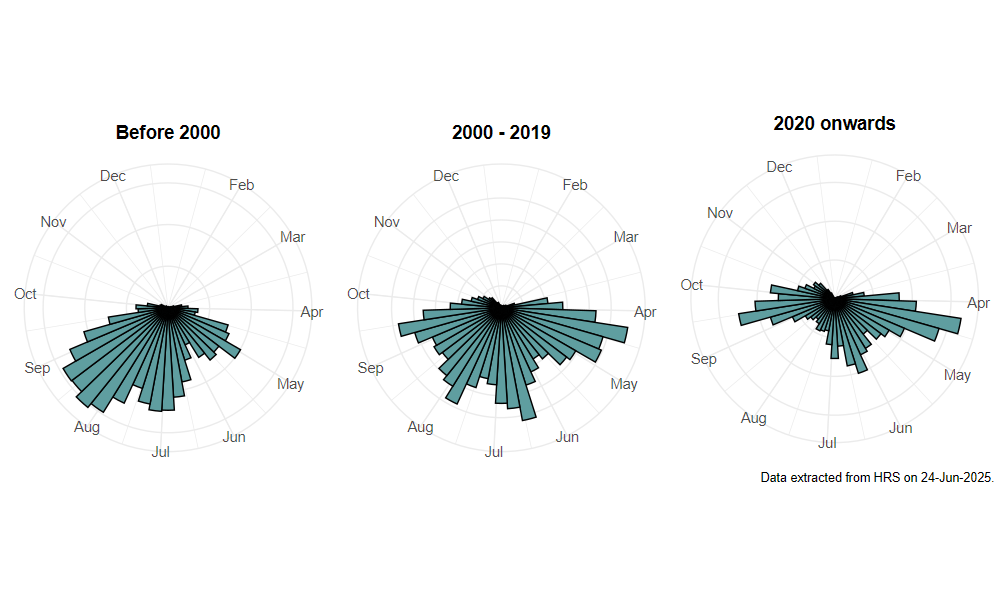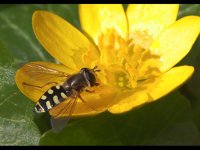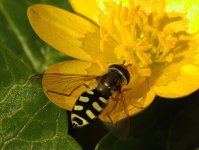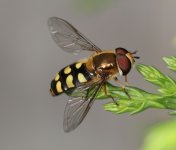Eupeodes luniger (Meigen, 1822)
Identification
Identification difficulty = 2. ![]()
![]() according to Ball & Morris, 20241
according to Ball & Morris, 20241
Synonymy
Syrphus luniger Meigen in Coe(1953)2, Metasyrphus luniger (Meigen) in Stubbs & Falk (1983)3. Eupeodes species C of Stubbs & Falk (2002)4 is now regarded as a dark variant of E. luniger.
Biology
The larva feeds on aphids associated with a variety of low growing plants. The adults are very mobile and likely to be found visiting flowers in almost any fairly open situation from clearing in woods, to farmland and urban parks, gardens and waste ground. They are frequent visitors to gardens. Males hover at some height beside bushes and in shafts of sunshine in woodland. There is huge variation in form that appears to be related to the temperatures experienced during larval and pupal development.
Flight period
The following plots show the number of unique records per week excluding those reported to be of immature stages.

Distribution
This is a very widespread and common species. It often occurs at a slightly different time of year to E. corollae, and can be more frequent, especially in south-east England. It is highly migratory and numbers are probably augmented in some years by immigrants from southern Europe.

Trends
The following plots show the Frescalo TFactor vs year and a map of the rescaled frequency (all records) for the species.
-
Ball, S., & Morris, R. (2024). Hoverflies of Britain and Ireland. WILDGuides (3rd ed.). Oxford: Princeton University Press. ↩
-
Coe, R. (1953). Diptera: Syrphidae. Handbooks for the Identification of British Insects, 10(1), 1–98. ↩
-
Stubbs, A., & Falk, S. (1983). British Hoverflies: An Illustrated Identification Guide (1st ed.). Reading: BENHS. ↩
-
Stubbs, A., & Falk, S. (2002). British Hoverflies An Illustrated Identification Guide (2nd ed.). Reading: BENHS. ↩


